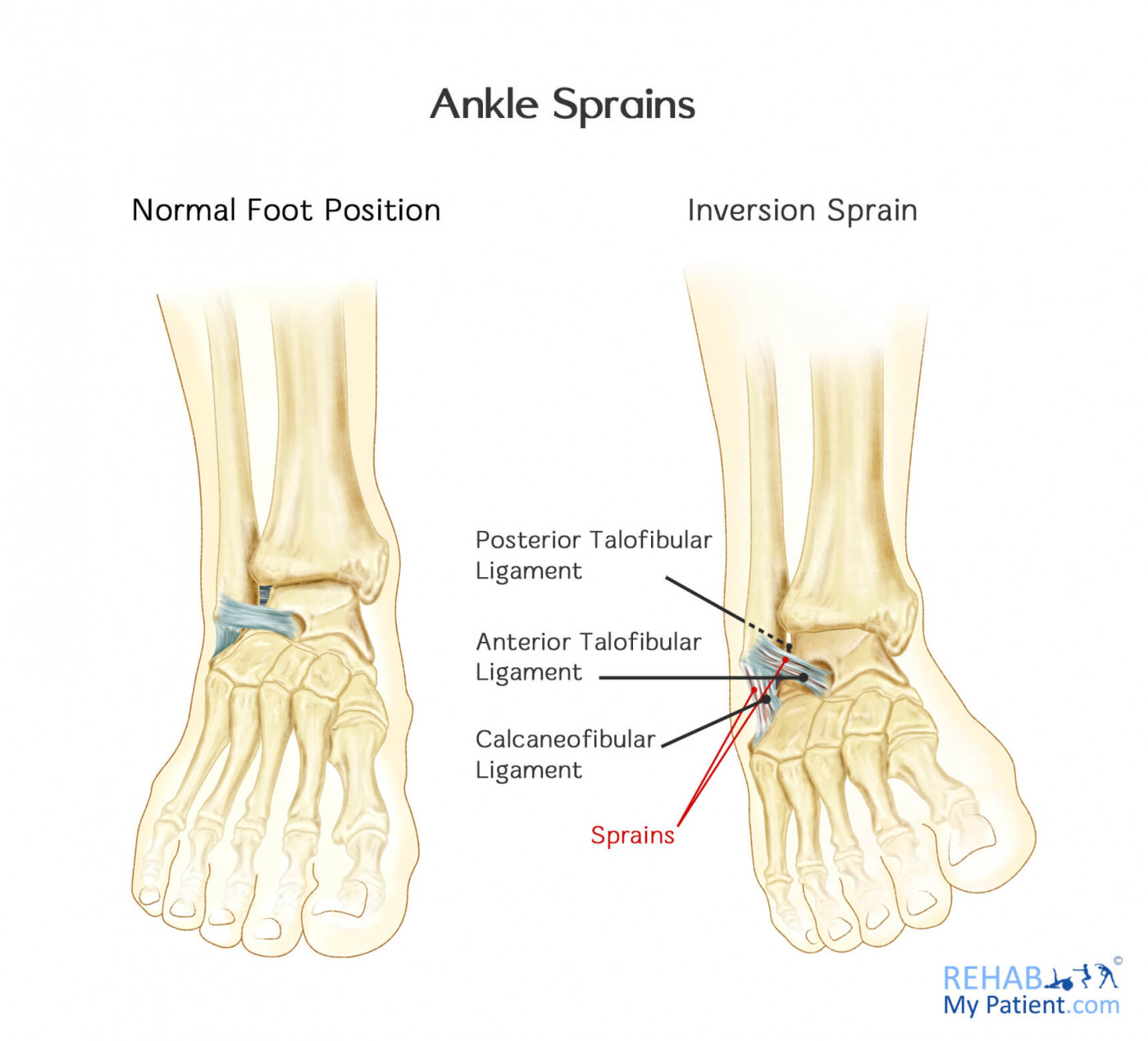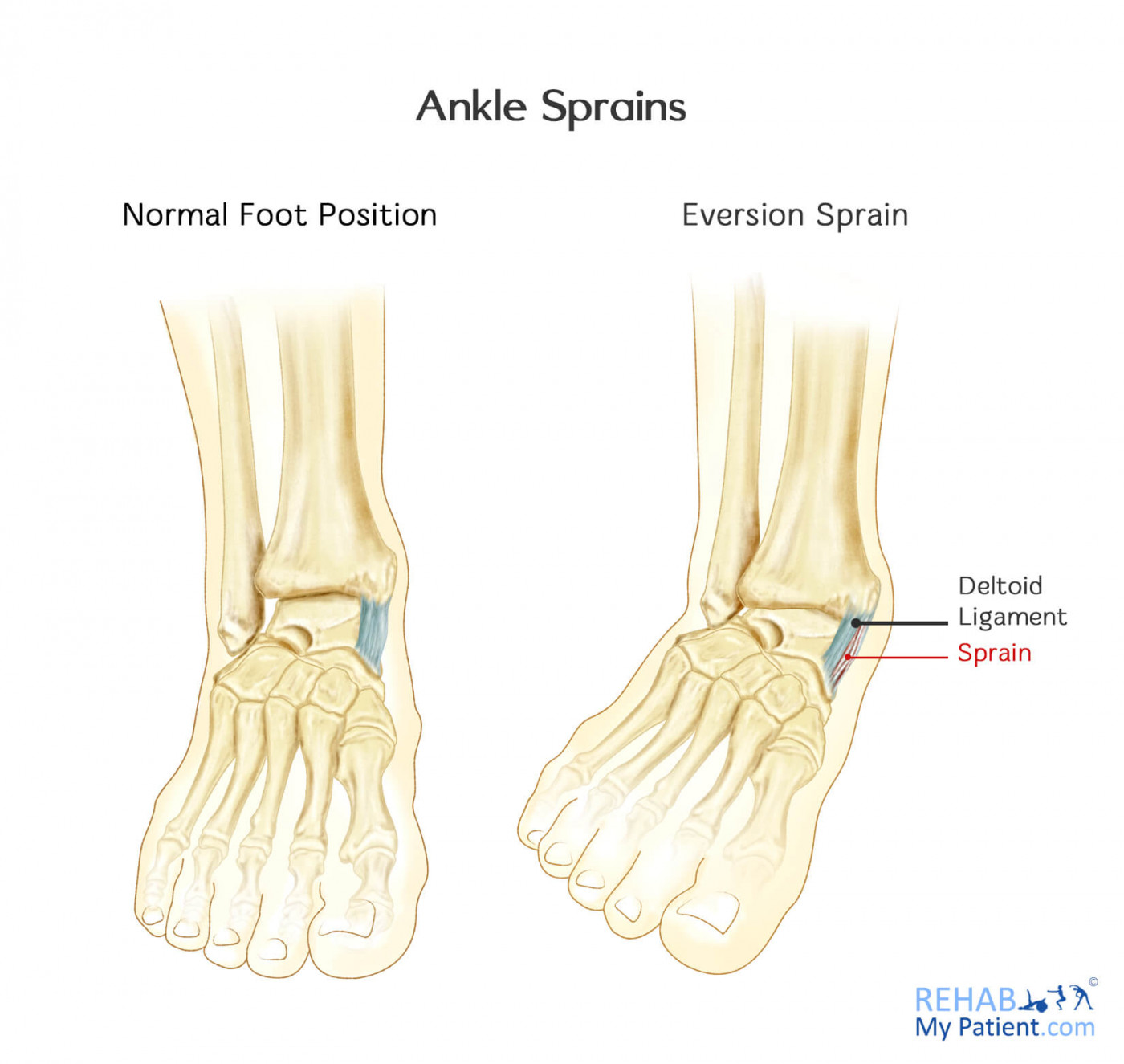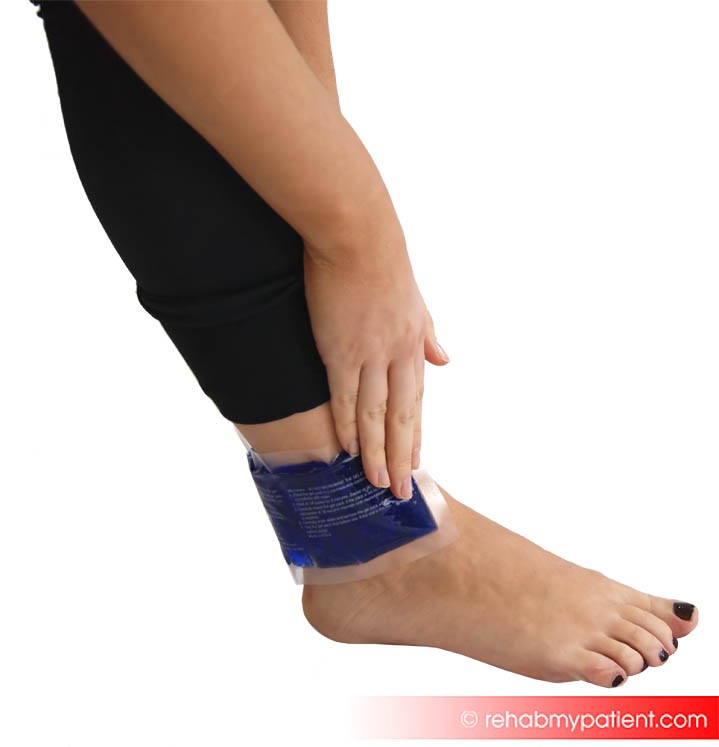Ankle Sprains (Medial and Lateral)
Opublikowano dnia 31st Mar 2017 / Opublikowano w: Kostka

Ankle sprains are one of the most common orthopaedic injuries and occur during a sudden, awkward twisting movement of the foot. As a result of these movements tearing and damage take place in the soft tissues and ligaments of the ankle.
An ankle sprain occurs when the ligaments of the ankle are stretched beyond their normal range. Sprains are graded depending on the severity and it may be advised to get a professional opinion.
Grade I sprains are when minimal damage occurs. There are no signs of ankle instability. The ankle may be swollen and tender on weight bearing and movements.
Grade II sprains occur when there is partial tearing of the ligaments. There may be mild ankle instability the symptoms are the same as those of a grade I sprain.
Grade III sprains occur when there is a complete tear of the ligaments and surgical intervention may be necessary. The ankle will be swollen and bruising may occur, one would not be able to bear weight through the ankle and movement will cause severe pain.
On the inside (medial) side of the ankle, the deltoid ligament supports the ankle. On the outside (lateral) side there are three ligaments: anterior talofibular, posterior talofibular and calcaneofibular ligament.

The most common ankle sprain occurs when you roll over the outside of your ankle, known as an inversion (medial) sprain.
If you roll on the inside of your ankle (less common), you may suffer an eversion (lateral) sprain.

Causes of Ankle Sprains
Medial ankle sprains occur on weight-bearing activities when sudden changes of direction are required. The injury occurs due to extreme turning of the ankle outwards. This often causes tearing to the ligaments on the outside of the ankle.
The mechanism of injury for the lateral ankle sprains is the opposite. These occur in extreme inward twisting of the ankle and this often happens in basketball or during landing on uneven surfaces. This causes damage to the ligaments on the inside of the ankle.
Signs & Symptoms
- Audible tearing sound at the time of injury.
- Gross swelling of the foot and ankle.
- Bruising around the foot and ankle, and sometimes going up the leg.
- Severe pain in the ankle and foot.
- Inability to stand on the affected foot, and likely difficulty walking comfortably.
- Decreased mobility of the ankle.
How to Manage Pain
For most ankle sprains surgery is not needed and the following advice may help reduce the pain and enhance the healing process:
- Rest: you may need to use crutches to avoid walking on the affected foot.
- Ice: apply for 5-10 minutes 3-4 times per day to decrease swelling. Always use a towel between your skin and the ice pack.

- Compression/ankle support: it will enhance the healing of the ligaments and reduce inflammation.
- Elevation: it will help minimise swelling/inflammation.
- Medication (NSAIDs/anti-inflammatories).
- Wear supportive shoes. Trainers or closed flat shoes that give the foot and ankle maximal support are best.
- Avoid uneven or slippery ground in the weeks following ankle sprain as your ankle may be more susceptible to re-spraining.
Manual therapy treatment is crucial for patients who suffer ankle sprains, as it will reduce inflammation, increase mobility to your ankle, and help full repair of the damaged ligament. Rehabilitation involving exercises and strengthening to the ankle following injury will ensure full strength is regained in the ankle, and this will hopefully prevent re-occurrences.
It should however be noted that approximately 75% of ankle sprains are actually a re-occurrence of a previous sprain. So doing the exercises set by your practitioner is totally necessary.
Zapisać się
Zarejestruj się już teraz, aby skorzystać z bezpłatnego okresu próbnego!
Zacznij korzystać z Rehab My Patient już dziś i zrewolucjonizuj proces przepisywania ćwiczeń, aby zapewnić sobie skuteczną rehabilitację.
Rozpocznij 14-dniowy bezpłatny okres próbny